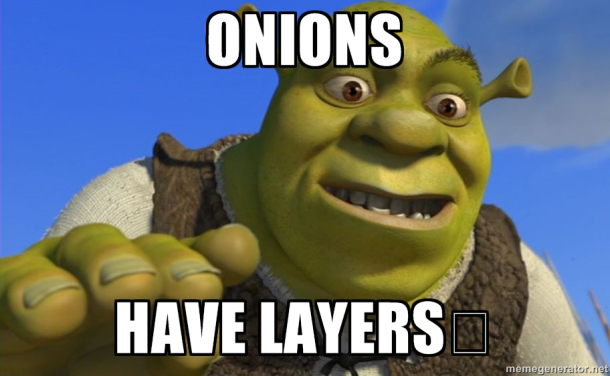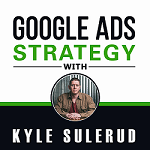Today I’m going to be answering a question that was emailed to me. It comes from Daniel and he writes:
“I’ve been really interested in the best layering combinations for running Display and YouTube traffic. So the question is, what are the best targeting options to layer for display/YouTube traffic to produce good quality traffic?”
That’s a really good question. So let me first just make sure everyone’s on the same page.

First, I’d like to talk about what he means by “layering”.
If you’re layering targeting, it means, within the same ad group, you are using more than one type of targeting. Maybe you are targeting placements and keywords. Or maybe you are targeting topics and audiences. What happens then, if you’re using more than one type of targeting, is your ads are only going to be shown when both of those criteria are met.
So if you’re targeting placements and keywords, then someone would have to be on one of the placements you’re targeting. And they would also have to have a match to one of your keywords.
You cannot layer within a type of targeting.
So if you’re adding a bunch of different keywords, those aren’t going to be layered on top of each other. If any of your keywords are a match, your ad is going to show for the keyword that is a match.
With audiences, however, you can actually set it up so that your audiences would be layered. There’s an option to set up combined audiences where you can say someone needs to be in this audience and also in this audience.
You can force Google to layer your audiences by setting up combined audiences. Otherwise, if you don’t do that, your audiences would not be layered. So if you were to target a remarketing audience, and also a detailed demographic and you’re targeting homeowners, those would not be layered. If those were the two audiences you were targeting, if someone was in the “homeowners” audience or in your “remarketing” audience, they would potentially see your ad. If you set up a combined audience with the homeowners and the remarketing list, then someone would have to meet both criteria.
So that’s the basics of layering.
About Daniel’s question and the best options to actually layer the traffic, I’d actually offer more of a caution about layering.
The big problem with layering is that it restricts your traffic significantly.
And you can even look at how this works. If you’re starting to set up a new campaign and you’re adding your targeting option. And on the right side of the campaign, it’ll tell you the estimated reach. As you start layering and targeting, you’re going to see that estimated reach drop very very significantly. So for that reason, I rarely layer. Instead, what I do is set up my targeting, and set up the best single definition targeting that I can.
These are going to be target CPA campaigns that are being run. So with the help of Google and just one type of targeting, I’m able to produce good results because I’ve chosen targeting that I know is going to work.
And I’ve also added a lot of types of targeting. So then I can look and see what isn’t working and start to trim things down. That’s personally how I do it. But I’m also running campaigns on a very large scale, where if I was trying to do a bunch of fancy layering, it would really hurt the campaign’s ability to scale.
If you are running a campaign where your target customer is so specific that you’d feel like you need to layer, by all means, go ahead and do that.
For example
If your product is only going to appeal to someone who is married, but you also only want to advertise on certain placements, then you can layer the placement targeting with the marriage targeting.
Just understand that that’s going to cut out a significant amount of traffic, especially since a lot of it is unknown to Google. They don’t know everyone who’s married. So if you are only narrowing in on one audience plus one other type of targeting, it’s just going to limit things. So if that’s the case, and you’re getting good results, then I definitely recommend loosening up your targeting (seeing if you can get rid of the layering and just target certain audiences).
Again, I’m not starting with a bunch of layering. I’m just starting with a bunch of targeting and seeing what works. I’m setting up a campaign with thousands of placement targeting. I’m setting up campaigns with hundreds of keywords. I’m setting up campaigns with lots of different audiences, lots of different topics. Whatever I think is going to work for a particular account, I’m targeting all of this stuff. And if I’ve done my job right, a lot of it, most of it is going to work well, and I cut out what doesn’t. And then I can scale really easily with what’s left over, because we’re somewhat restricted by using one type of targeting but it’s still relatively broad. So when we’re getting good results, and we’re ready to scale, that’s easy to do, because I’m not really layering.
The exception to this would be if a campaign is targeting a certain type of demographic.
So a certain age group, certain gender, Google’s data on that is really good. I’m confident that if they’re telling me someone is a man, that they are actually a man. So if a client has a product that is only going to target men, I would start by layering men on top of all the other types of targeting that I’m doing. At the same time, though, I would also be prepared to, once we’re getting good results there, branch out and at least add to the unknown gender because that’s gonna be half men. And if the campaign is optimized well, Google is going to be showing the ad to people most likely to convert.

The only layering that I’m doing from the start of a campaign is age or gender layering.
Hopefully, that helps answer the question. For anyone else running YouTube or Display campaigns, hopefully, that helps you, too. It really is about just adding a lot of stuff and then taking away what doesn’t work. At least that’s how I do it. If you want to start smaller with a lot of layering, and then try to expand, I don’t see why that wouldn’t work also. It’s just going to take a lot longer to scale.
So, Daniel, thanks for the question.
